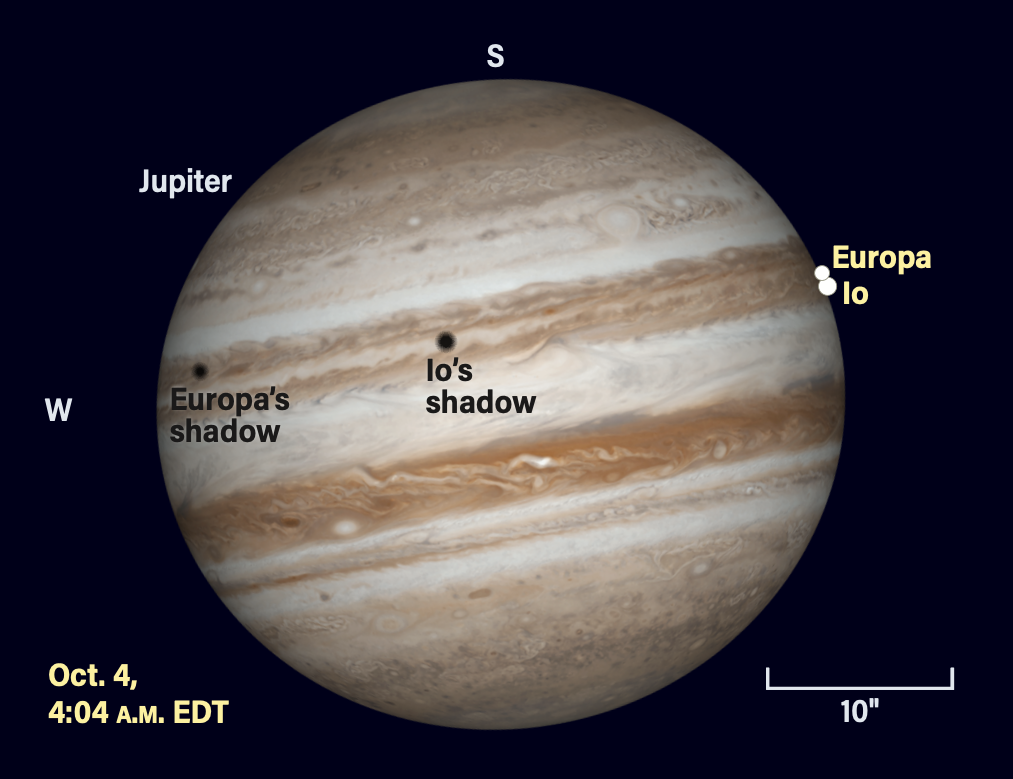Back to Article List
Jupiter’s moons Io and Europa overlap as they begin to transit the gas giant early this morning, following their shadows across.

Io and Europa overlap (with smaller Europa appearing in front) as the two moons begin a transit of Jupiter on Oct.4. Ganymede lies east of Jupiter and Callisto lies to the west, outside the field of view shown here. Credit: Astronomy: Roen Kelly
Jupiter’s Galilean moons often transit the planet’s disk one at a time — tonight, however, Io and Europa cross the disk together. The two moons even appear to partially overlap as their transits begin early this morning at 4:04 a.m. EDT, with smaller Europa passing in front of larger Io.
You’ll spot bright Jupiter high in the east around this time, to the lower right of Castor and Pollux in Gemini (the planet outshines the two stars). Make sure to get your telescope out early — around 3:30 A.M. EDT, Io and Europa are approaching Jupiter from the east, but their shadows are already crossing the disk. Europa’s shadow is nearest the western limb, while Io’s is closer to the eastern limb (and the two moons). The moons’ transit begins at 4:04 A.M. EDT, with Europa’s shadow slipping off the opposite limb 13 minutes later.
Keep watching as Io quickly pulls ahead of Europa; the volcanic moon is on a smaller, closer-in orbit around Jupiter, and thus moves faster across the face of the planet. By the time Io’s shadow disappears at 5:03 A.M. EDT, the two moons are well separated and Io is roughly halfway across the disk. Continue watching the moons as long as you can; the entire U.S. should be able to catch Io’s exit around 6:20 A.M. EDT, although the sky is growing bright for those on the East Coast. Europa’s transit ends around 5:53 A.M. CDT, right around sunrise in the Eastern time zone.
Sunrise: 7:00 A.M.
Sunset: 6:37 P.M.
Moonrise: 5:25 P.M.
Moonset: 3:53 A.M.
Moon Phase: Waxing gibbous (92%)
*Times for sunrise, sunset, moonrise, and moonset are given in local time from 40° N 90° W. The Moon’s illumination is given at 12 P.M. local time from the same location.
For a look ahead at more upcoming sky events, check out our full Sky This Week column.
